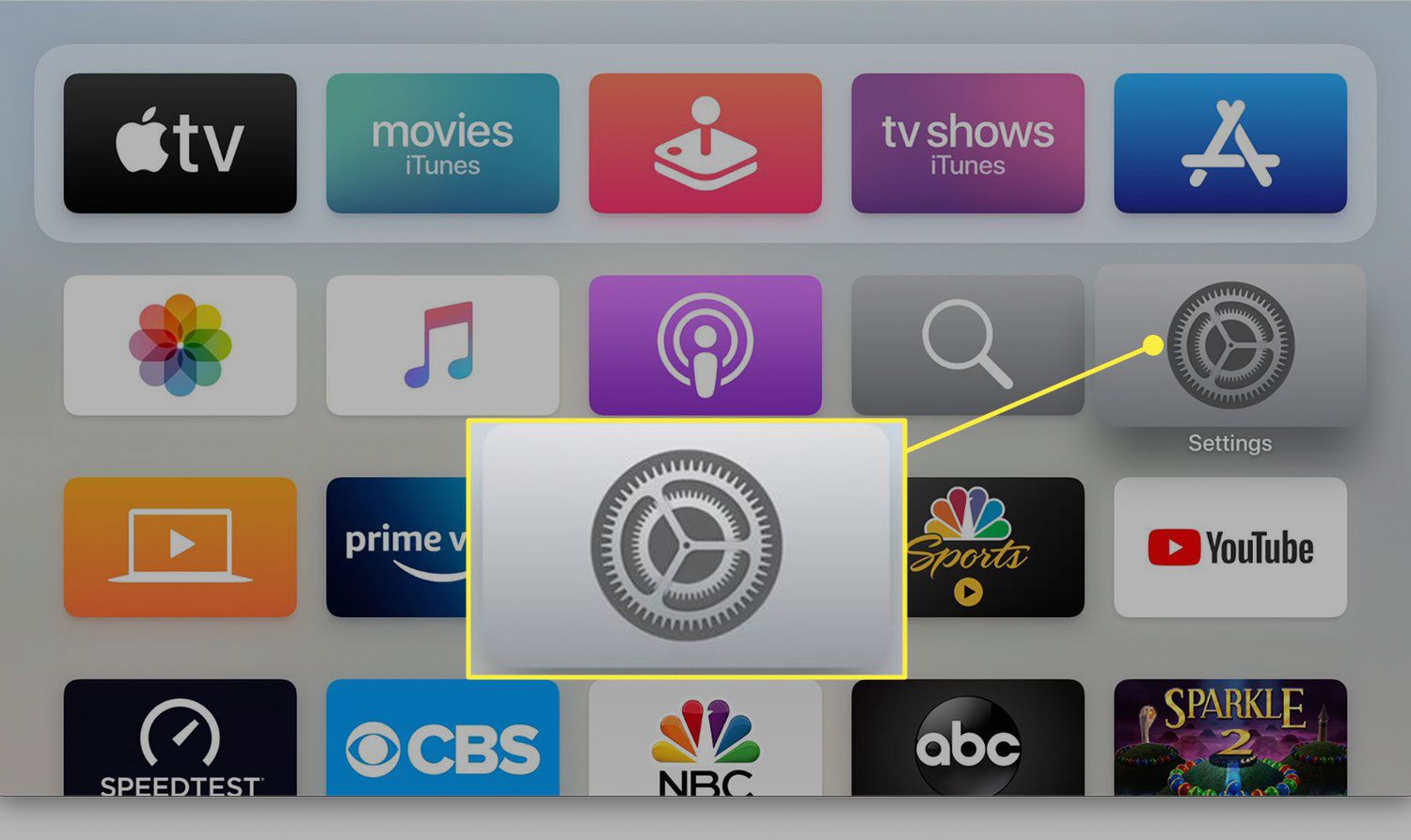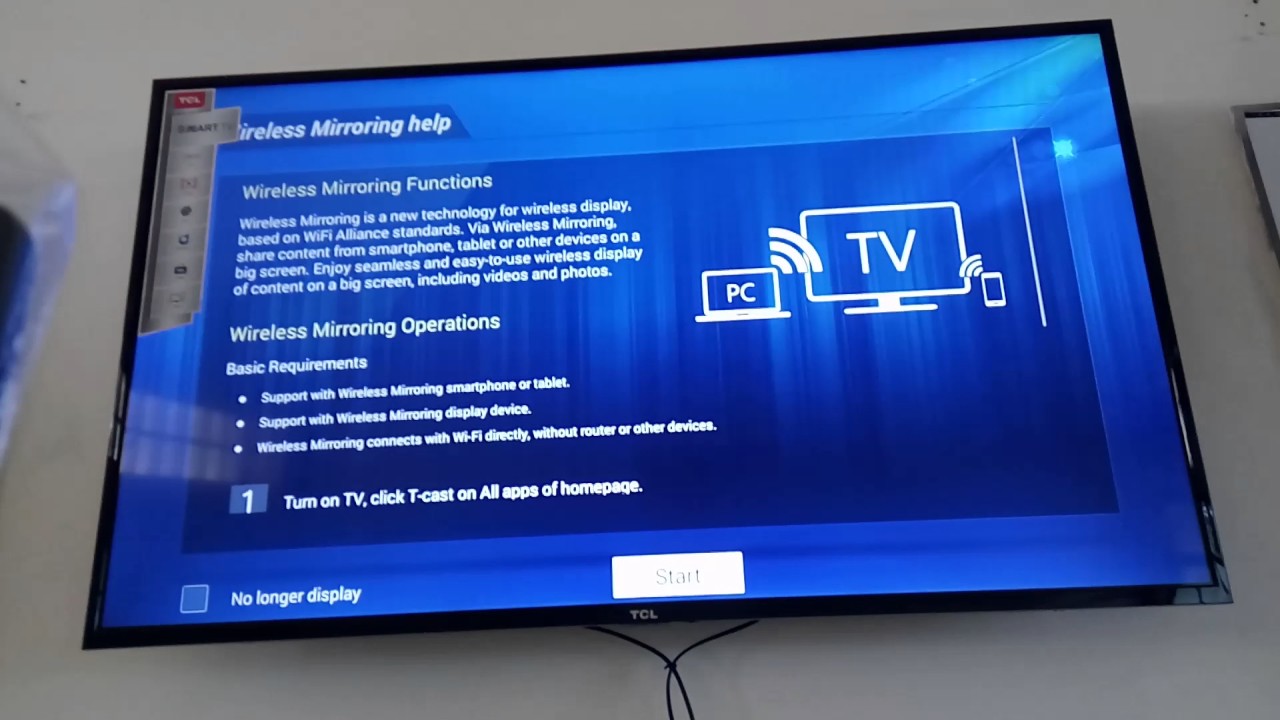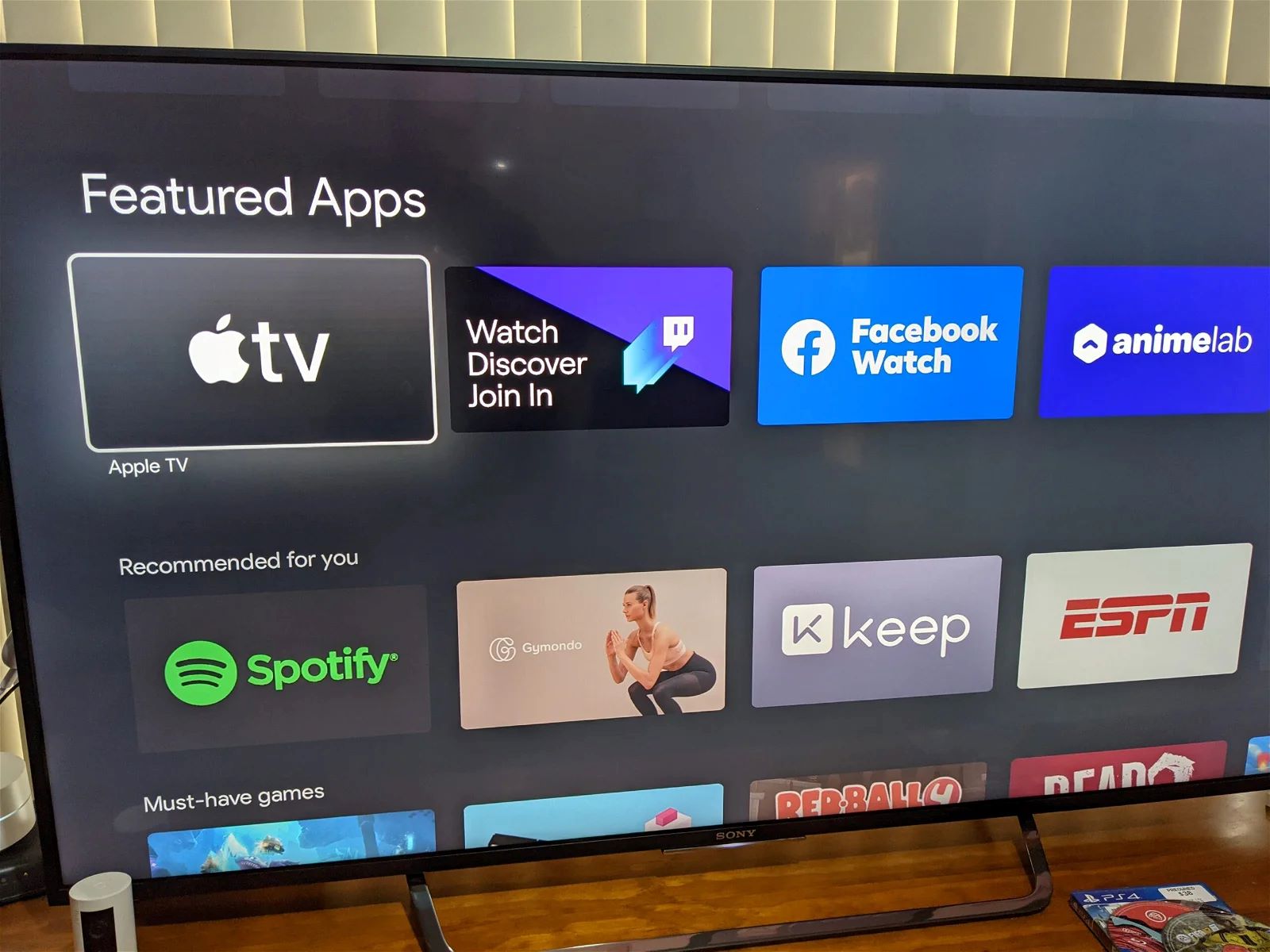Introduction
Airplay is a wireless streaming technology developed by Apple that allows users to stream audio, video, and photos wirelessly from their Apple devices, such as iPhones, iPads, and Macs, to compatible devices like Apple TVs and speakers. It offers seamless multimedia streaming and is widely used for entertainment purposes.
While Airplay provides a convenient way to enjoy your favorite media content on a larger screen or better speakers, it may not always support subtitles by default. Subtitles are essential for various reasons – they assist those with hearing impairments, allow viewers to follow along with foreign language content, and improve accessibility for a wider audience.
In this article, we will explore different methods to get subtitles on Airplay. Whether you’re watching a movie or streaming a TV show, these methods will help you ensure that you don’t miss out on any dialogue or important information.
So, if you’re ready to enhance your Airplay experience with subtitles, let’s dive into the methods.
What is Airplay?
Airplay is a proprietary wireless streaming technology developed by Apple Inc. It allows users to wirelessly stream media content, including audio, video, and photos, from their Apple devices to compatible devices such as Apple TVs, speakers, and receivers. This technology enables seamless and convenient playback of multimedia content across different devices within the Apple ecosystem.
The Airplay technology uses a combination of Wi-Fi and Bluetooth to connect devices and transmit audio and video data. With Airplay, you can mirror your entire screen or specific apps on your Apple device to a larger display, enhancing the viewing experience for movies, TV shows, presentations, and more. It also allows you to stream music to speakers, creating a wireless audio playback system throughout your home.
Airplay offers several benefits for users. It provides high-quality streaming of audio and video content, ensuring a smooth and uninterrupted playback experience. It also supports multi-room audio functionality, allowing you to play music simultaneously on multiple speakers or devices. Additionally, Airplay supports stereo pairing, enabling you to connect two speakers for a more immersive audio experience.
To use Airplay, both the transmitting device (such as an iPhone or iPad) and the receiving device (such as an Apple TV or Airplay-compatible speaker) need to be connected to the same Wi-Fi network. Once connected, you can easily select the Airplay option on your Apple device, choose the desired receiving device, and start streaming your media content wirelessly.
Airplay is compatible with various Apple devices, including iPhones, iPads, iPods, Macs, and Apple TVs. It offers a seamless integration between these devices, allowing you to effortlessly stream and control media playback across different devices. Whether you want to enjoy videos on a big screen or listen to music with enhanced audio quality, Airplay provides a convenient and user-friendly solution.
In the next sections, we will explore different methods to enable subtitles on Airplay, ensuring that you can enjoy your favorite content with accurate and synchronized subtitles.
Why do you need subtitles on Airplay?
Subtitles play a crucial role in enhancing the overall viewing experience, especially when it comes to streaming media content on Airplay. Here are some reasons why subtitles are essential:
- Accessibility: Subtitles ensure that everyone, including individuals with hearing impairments, can fully enjoy the content. It provides a means for them to follow along with the dialogue, captions, and sound effects, making the media more inclusive and accessible.
- Language comprehension: Subtitles are particularly useful when watching movies or TV shows in a foreign language. They help viewers understand the dialogue and improve their comprehension. This is especially important when dealing with complex or fast-paced conversations.
- Better understanding: Subtitles can aid in clarifying dialogue that may be muffled, spoken quickly, or in a heavy accent. They ensure that viewers catch every word and fully grasp the intended meaning of the content.
- Noisy environments: Watching media content in noisy environments, such as crowded places or with the background noise of daily activities, can make it difficult to hear the dialogue clearly. Subtitles help to overcome this challenge by providing a visual representation of the spoken words.
- Content accuracy: Subtitles can be useful for ensuring the accuracy of content, particularly when dealing with technical jargon, unfamiliar terms, or dialects. They help in avoiding any misinterpretation or confusion by providing clear and precise information.
- Multi-language support: Subtitles allow for the translation of content from one language to another, which enables viewers from different language backgrounds to enjoy the same media. It helps in bridging the language barrier and opens up opportunities for cultural exchange and understanding.
Whether you have specific accessibility needs, are learning a new language, or simply want to enhance your overall comprehension and enjoyment of media content, having subtitles on Airplay is essential.
Now that we understand the importance of subtitles, we can explore different methods to enable subtitles while streaming media on Airplay. These methods will help you unlock the full potential of your Airplay experience and ensure that you don’t miss out on any crucial details or dialogue.
Method 1: Using media players that support subtitles
One of the simplest ways to get subtitles on Airplay is by using media players that support subtitle files. Many media players, such as VLC Media Player, Infuse, or Plex, have built-in subtitle support and can be used to stream content with subtitles to Airplay-compatible devices. Here’s how you can use this method:
- First, make sure you have a media player installed on your Apple device that supports subtitles. Some popular options include VLC Media Player, Infuse, or Plex. You can find these media players on the App Store.
- Next, transfer the media file along with its corresponding subtitle file to your device. The subtitle file should have the same file name as the media file and be in a supported subtitle format, such as SRT, SUB, or VTT.
- Open the media player app and navigate to the location where the media file and subtitle file are stored.
- Select the media file you want to play and make sure the subtitle file is selected as well. The media player should automatically detect and load the subtitle file.
- Once the media file is playing with the subtitles, connect your Apple device to the Airplay-compatible device, such as Apple TV or a compatible speaker, by swiping up from the bottom of the screen and selecting the Airplay option.
- Choose the desired Airplay device from the list, and the media playback, along with the subtitles, will be streamed to the Airplay device.
Using media players with built-in subtitle support offers a seamless solution for streaming media with subtitles on Airplay. It ensures that the subtitles are synchronized with the media playback and can be customized according to your preferences, such as font size, color, and position.
Note that the availability and features of subtitle support may vary depending on the media player app. Some media players may require additional settings or configurations to enable the subtitle functionality. Therefore, it’s essential to explore the settings of your chosen media player to ensure that subtitles are enabled and configured correctly for Airplay streaming.
Now that you know how to utilize media players that support subtitles on Airplay, you can enjoy your favorite movies and TV shows with accurate and synchronized subtitles.
Method 2: Using subtitle apps
If your media player does not support subtitles or you’re looking for more advanced subtitle options, using subtitle apps can be a great alternative. Subtitle apps provide more flexibility and control over subtitles, allowing you to easily add, sync, and adjust subtitles while streaming content on Airplay. Here’s how you can use this method:
- Start by downloading a subtitle app from the App Store that is compatible with your Apple device. Some popular subtitle apps include Subtitles Viewer, Subtitle Edit, or Subtitle Studio.
- Once you have installed the subtitle app, transfer the media file you want to watch and its corresponding subtitle file to your device. Make sure the subtitle file has the same file name as the media file and is in a supported subtitle format, such as SRT or SUB.
- Open the subtitle app and navigate to the location where the media file and subtitle file are stored.
- Select the media file you want to play within the subtitle app. The app should automatically detect and display the available subtitle files.
- Choose the desired subtitle file and adjust any settings or preferences, such as subtitle synchronization, font size, or style.
- Once the settings are configured, connect your Apple device to the Airplay-compatible device, such as Apple TV or a compatible speaker, by accessing the Control Center or the Airplay option.
- Select the desired Airplay device from the list, and both the media playback and synchronized subtitles will be streamed to the Airplay device.
Using subtitle apps gives you more control and flexibility over subtitles, allowing you to customize their appearance and synchronization. Some subtitle apps also offer additional features like automatic subtitle downloads, subtitle searching, or real-time translation for an enhanced viewing experience.
It’s essential to ensure that the subtitle app you choose supports Airplay streaming and is compatible with your Apple device. Additionally, check the subtitle formats supported by the app to ensure that your subtitle file is compatible.
By utilizing subtitle apps, you can have a seamless experience of streaming media with synchronized subtitles on Airplay, opening up a whole new world of accessibility and enjoyment.
Method 3: Converting subtitles to a compatible format
If you have subtitle files that are not in a compatible format for Airplay, you can convert them to a supported format using various subtitle conversion tools available online. Converting subtitles to a compatible format ensures that they can be seamlessly displayed while streaming media content on Airplay. Here’s how you can use this method:
- Start by identifying the subtitle file format that you have and verifying the supported subtitle formats for Airplay. Common subtitle formats that Airplay supports include SRT, SUB, or VTT.
- Search for a reliable online subtitle converter tool that allows you to convert subtitle files to a compatible format. Some popular options include Subtitle Converter, Convertio, or NASC.
- Upload your subtitle file to the conversion tool. Make sure to choose the desired output format that is supported by Airplay.
- Initiate the conversion process, and the online tool will convert your subtitle file to the selected format.
- Once the conversion is complete, download the converted subtitle file to your device.
- Add the converted subtitle file to the same folder as the media file you want to watch on Airplay.
- Connect your Apple device to the Airplay-compatible device, such as Apple TV or a compatible speaker.
- Start playing the media file, and the Airplay streaming should include the converted subtitle file, displaying the subtitles as you watch.
Converting subtitles to a compatible format allows you to ensure that they are properly recognized and displayed during Airplay streaming. It is important to note that the conversion process may vary depending on the chosen online tool, so it’s recommended to follow the specific instructions provided by the converter platform.
By converting your subtitle files to a compatible format, you can enjoy streaming media content with accurate and synchronized subtitles on Airplay, enhancing your viewing experience and ensuring that you don’t miss out on any crucial details or dialogue.
Method 4: Adjusting Airplay settings on Apple devices
If you’re unable to get subtitles on Airplay using the previous methods, you can try adjusting the Airplay settings on your Apple device. Sometimes, subtitles may not appear due to certain settings or configurations. By making the necessary adjustments, you can ensure that subtitles are enabled and displayed while streaming content on Airplay. Here’s how you can use this method:
- On your Apple device, navigate to the Settings app.
- Scroll down and tap on “Airplay & Handoff”.
- Ensure that the Airplay feature is enabled by toggling the switch to the “On” position.
- Under the Airplay settings, check if the “Subtitles” option is available. If it’s present, make sure it is set to “On” or “Automatic”.
- If the “Subtitles” option is not available, navigate to the Accessibility settings by going back to the main Settings menu and selecting “Accessibility”.
- In the Accessibility settings, tap on “Subtitles & Captioning”.
- Toggle the switch for “Closed Captions + SDH” to the “On” position.
- Adjust any additional subtitle settings according to your preference, such as font size or style.
- Connect your Apple device to the Airplay-compatible device, such as Apple TV or a compatible speaker.
- Start playing the media file, and Airplay streaming should include the subtitles, displaying them as you watch.
Adjusting the Airplay settings on your Apple device ensures that subtitles are enabled and ready to be displayed while streaming media content. It’s important to note that the availability of subtitle settings may vary depending on the device model and operating system version. Thus, it’s recommended to explore the specific Airplay and Accessibility settings on your Apple device to ensure that subtitles are configured correctly for Airplay streaming.
By adjusting the Airplay settings on your Apple device, you can ensure that subtitles are displayed while streaming media content on Airplay, providing you with an enhanced viewing experience and making it easier to follow along with the dialogue and captions.
Conclusion
Getting subtitles on Airplay can greatly enhance your viewing experience by ensuring that you don’t miss out on any dialogue or crucial information. Whether you’re watching movies, TV shows, or any other media content, having accurate and synchronized subtitles can improve accessibility and make the content more enjoyable for a wider audience.
In this article, we explored four different methods to get subtitles on Airplay. By using media players that support subtitles, utilizing subtitle apps, converting subtitles to a compatible format, or adjusting the Airplay settings on your Apple device, you can easily enable subtitles while streaming media on Airplay-compatible devices such as Apple TVs or speakers.
Each method offers its own advantages and flexibility. Using media players with built-in subtitle support provides a seamless solution, while subtitle apps offer more control and advanced options. Converting subtitles to a compatible format ensures compatibility with Airplay, and adjusting the Airplay settings on your Apple device can resolve any configuration issues that may prevent subtitles from appearing.
Remember to choose the method that suits your needs and preferences, depending on the media player you prefer, the availability of subtitle apps, the subtitle formats you have, and the specific settings on your Apple device.
With subtitles enabled on Airplay, you can enjoy a more inclusive and immersive multimedia streaming experience. Whether you’re watching movies in a foreign language, accessing content in noisy environments, or simply enhancing accessibility for individuals with hearing impairments, subtitles on Airplay provide a valuable solution.
So, next time you use Airplay to stream media content on your Apple devices, ensure that subtitles are enabled using one of the methods mentioned in this article. By doing so, you’ll unlock the full potential of your Airplay experience and enjoy your favorite content with accurate and synchronized subtitles.

























